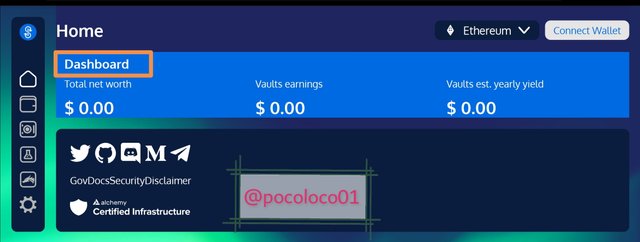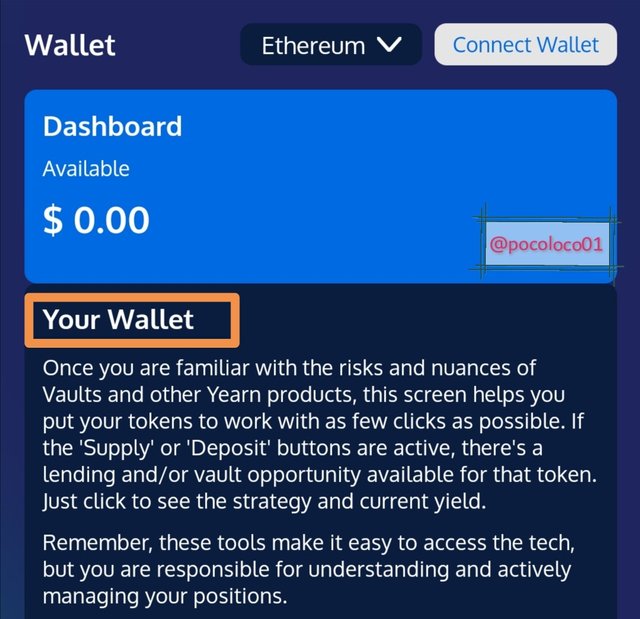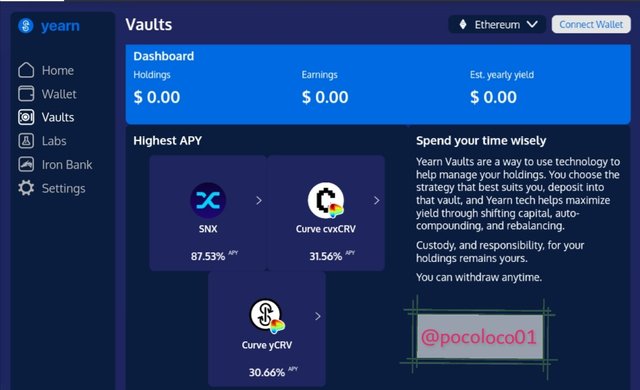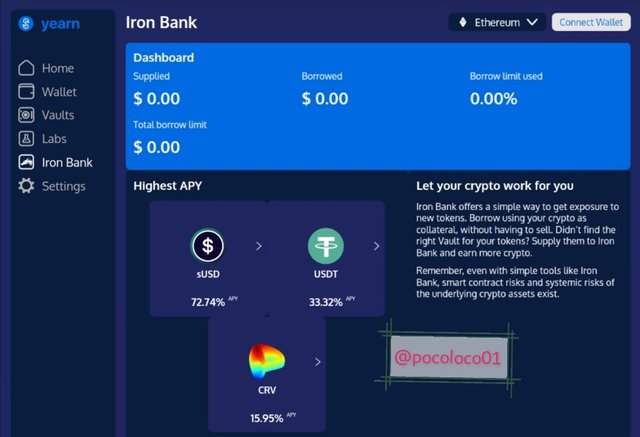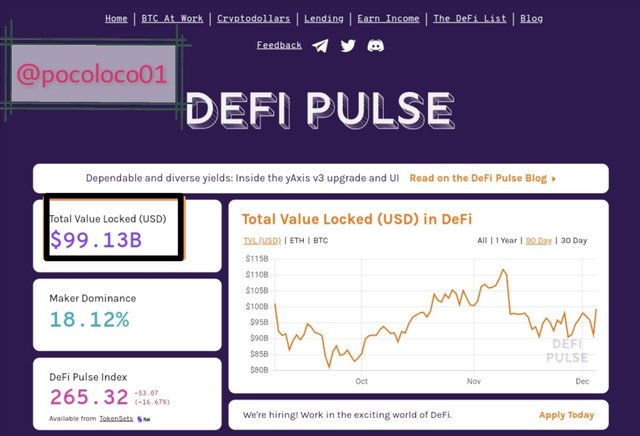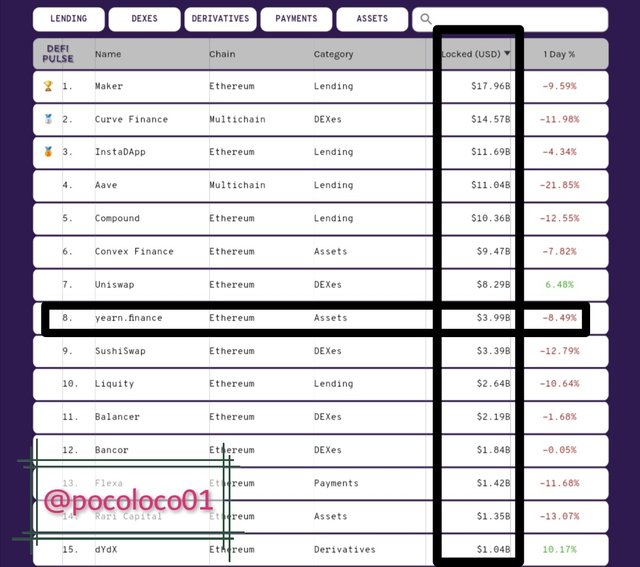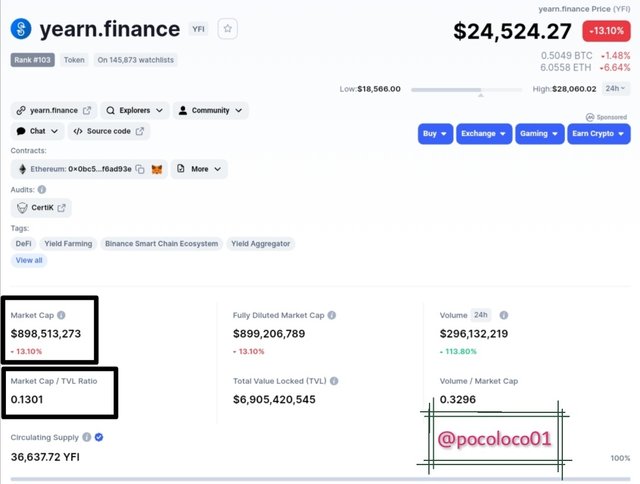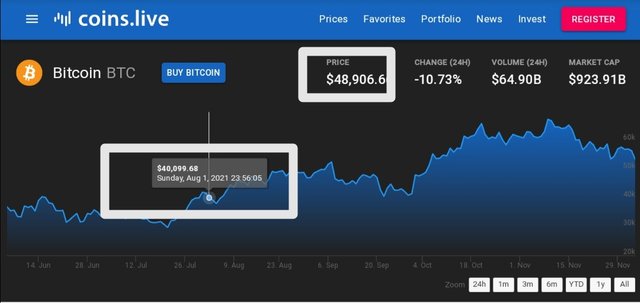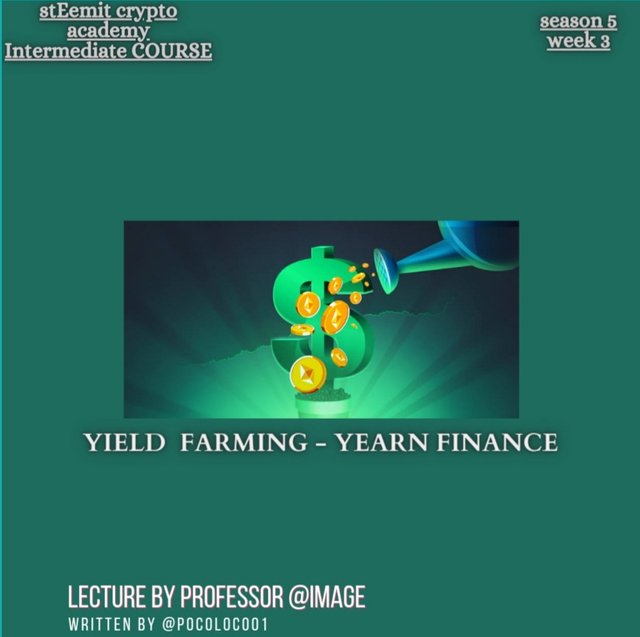
Hey guys,
Welcome to SteemitCryptoAcademy season 5 week 3 course by Professor @image.
Without wasting much of our time, let me quickly proceed with the given task.

QUESTION 1
Describe the differences between Staking and Yield Farming.
Yield Farming
Yield can simply be regarded as an ROI "Return On Investment"
Farming is the act of planting seeds and raising animals with the primary purpose of earning a much greater profit.
Looking at the above two definitions, it is apparent that yield farming is an act of investment in other to earn interest.
It means to give up ownership of one's asset to another over a given period with the primary aim of earning interest.
These assets are deposited to the liquidity pool and this liquidity, in turn, makes swapping of such tokens easier and faster. These yield farmers who provide this liquidity by farming are regarded as liquidity providers.
The interest earned by these miners is calculated in terms of APY which stands for "Annual Percentage Yield".
STAKING
Crypto staking is an act of locking up crypto assets to gain influence on the platform which in turn generates earnings in form of incentives to the stake.
These stakes work primarily to increase the security of the system on which the assets in staked. That is to say, the higher the amount staked, the greater the security of the platform.
DIFFERENCES BETWEEN YIELD FARMING AND STAKING
| YIELD FARMING | STAKING |
|---|---|
| Profit is higher and it is calculated as APY | Profit is less and it is regarded as incentives. |
| Yield farmers are regarded as liquidity providers | Stakers are regarded as nodes or delegates. |
| YIELD farmers work primarily to increase the easy swapping of assets thereby allowing investors to easily buy or sell their assets. | Stakers primarily works to increase the security of a decentralized platform by serving as developer or content nodes. |
| The more farmer locks assets the more interest it yields for the farmer. | The more a node stakes more tokens the more influence the node gets on the platform. |
| Farmers don't enjoy governance rights on the platform | Nodes are responsible for approving proposals on a decentralized platform through voting. |
| There is usually no minimum or maximum amount of an asset to lock in other to participate in farming | In other to participate as a node, there is usually a minimum amount of the token required to be staked. Eg: a 200,000 $Audio token is required to be staked in other to participate as a node in Auduis's decentralized music platform. |

QUESTION 2
Login to Yearn Finance. Fully explore the platform and indicate its functions. Describe the process for trading on the platform (wallet connection, funds transfer, available options). Show screenshots.
Yearn Finance is a decentralized finance (DEfi) platform built on Ethereum blockchain.
It can be regarded as an investment platform that doesn't require an intermediary between investors and investment source rather it uses the aid of smart contracts which perform the activities of the intermediary. These smart contracts aids in gathering funds between different liquidity pools to make high returns on various funds with so much accuracy.
In other to explore the Yearn Finance platform and indicates its functions, we will start by logging into its official platform using https://Yearn.finance
FEATURES OF YEARN FINANCE PLATFORM
DASHBOARD
The interphase of yearn Finance platform has the dashboard which contains the details of vault earnings and, networth value. Assets in the vault are maximized through various means which include supplying colleteral, farming other tokens, network fees, etc. All these profit generating activities are carried out by smart contract.
WALLET
To utilize this feature, one has to first connect to an external wallet like MetaMask. The wallet feature allows uses to easily put their funds into work by allowing them to take hold of vault opportunities available for their tokens and this opportunity is identified by the supply or deposit bottom being active.
VAULT
This feature allows users to deposit their assets and assets in here are being maximized majorly through shifting capitals aided by smart contracts.
LABS
This feature helps to keep users updated over various updates, innovations, opportunities, and various upgrades happening on the platform.
IRON BANK
This feature allows users to easily get exposed to new tokens. Tokens in Iron banks can be used to borrow other tokens without a user having to sell or convert.
The process for trading on the platform (wallet connection, funds transfer, available options).
Connect wallet
Step 1
After clicking on connect to a wallet, choose any wallet of your choice.
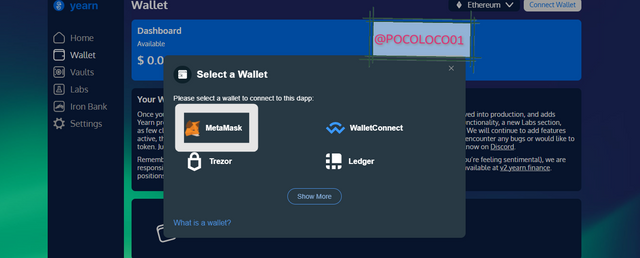
Step 2
Click next on next
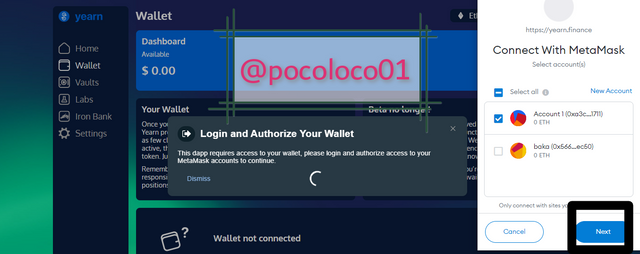
Step 3
Click on conmect
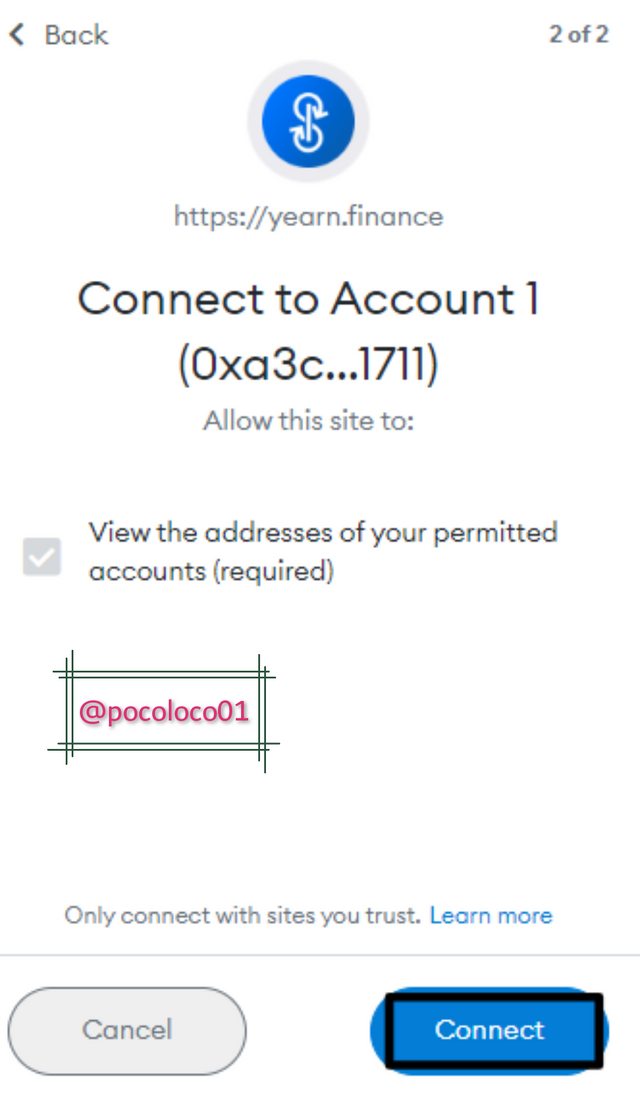
Step 4
Wallet successfully connected.
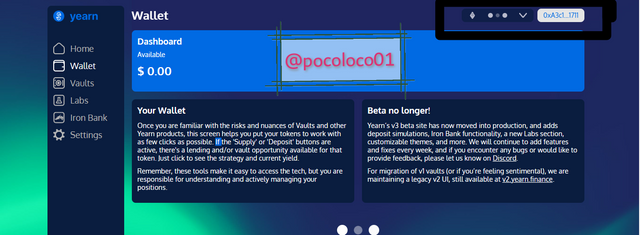
FUNDS TRANSFER
Step 1
Click on vaults
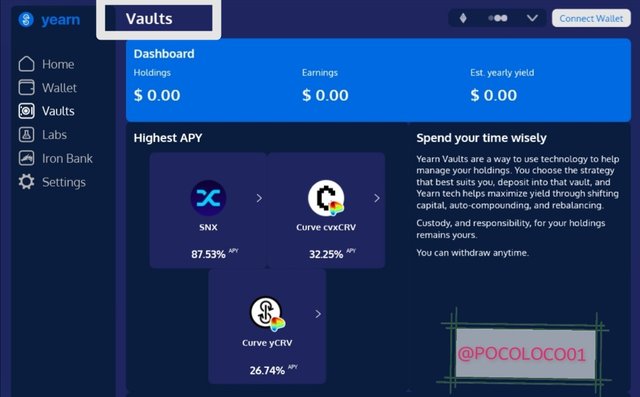
Step 2
Select any token of choice
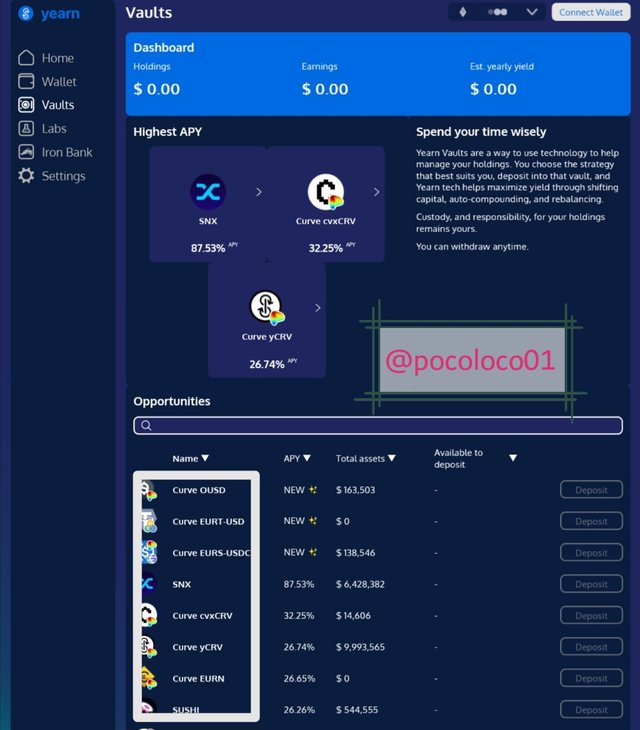
Step 3
Click on approve
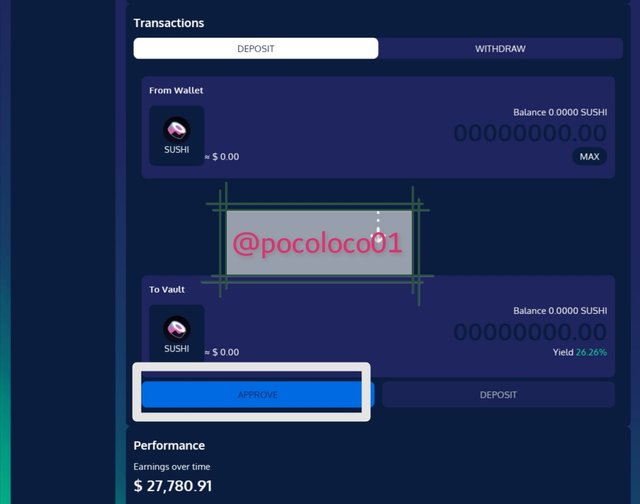
BORROW FUNDS
Step 1
Click on Iron bank
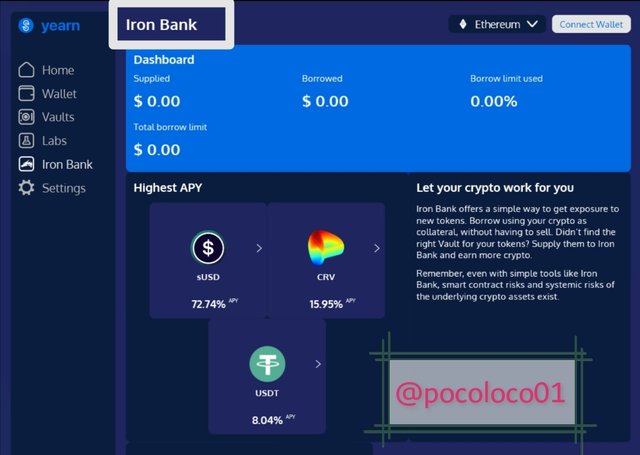
Step 2
Choose any token of choice and click on borrow.
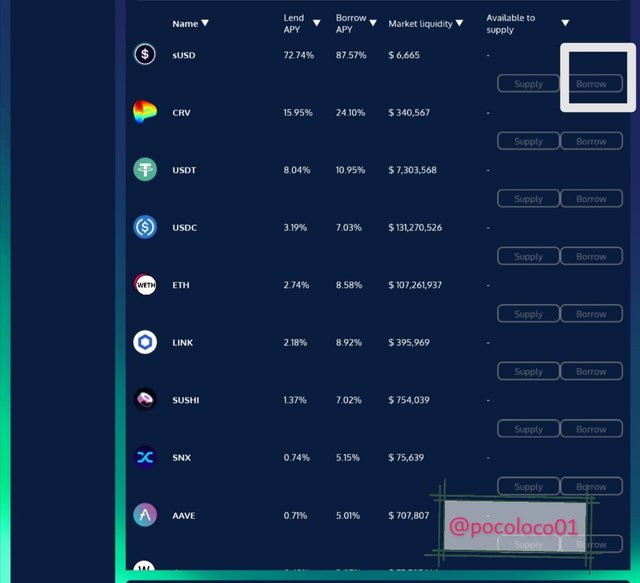

QUESTION 3
What is collateralization in Yield Farming? What is its function?
Collateralization in Yield Farming is the act of leaving a crypto asset as colleteral for another borrowed token.
This helps nullify the chances of not paying back as what is deposited as collateral is usually greater in value than what was borrowed.
Just like what we have in our traditional financial system "banks". When one borrows a particular amount of funds, one is required to give in as collateral an asset that is of the same value or even worth more than the amount borrowed. This compels the borrower to pay the pack as agreed or forfeit the collateral.
This same thing occurs in Yield farming but the difference here is that what is borrowed and what is deposited as collateral are all cryptocurrencies.
Borrowing allows a user the privilege to have access to a token using a different token without having to sell.
- FUNCTION
Colleterization serves to provide insurance on assets borrowed by users. This prevents users from borrowing assets and not paying them back as that will mean them forfeiting their token deposited as collateral. This token is usually worth more than worth is borrowed by the user.
Also, it keeps the system running because if users keep borrowing and not paying back due to lack of collateralization, that WI lead to bankruptcy of the platform.
Colleterization also helps to sustain the liquidity of the platform as users won't have to sell off their token but rather deposit it on the platform as collateral in other to borrow an entirely different token.

QUESTION 4
At the time of writing your assignment, what is the TVL of the DeFi ecosystem? What is the TVL of the Yearn Finance protocol? What is the Market Cap / TVL ratio of the YFI token? Show screenshots.
TVL OF DEFI ECOSYSTEM
At the time of writing this, the TVL of the DeFi ecosystem is $99.13B
- Screenshot
The TVL of Yearn Finance protocol?
The TVL of Yearn Finance protocol as of the time of this post is $3.99B.
- screenshot
Market Cap AND TVL RATIO OF YEARN FINANCE
As at the time of this post, the market capitalization of Yearn Finance and the TVL ratio is $898,513,273 and 0.1301 respectively.
- Screenshot
Calculating Market Cap/TVL we have;
$898,513,273/$3,099,000,000
= 0.2899365191997
=0.290(3dp)

QUESTION 4.1
The YFI token, is it overvalued or undervalued? State the reasons.
In other to know if a token is undervalued or overvalued, the Market cap/TVL is considered and considering this the YFI token is undervalued
REASON
Using the calculation above, we see that the Market cap/TVL ratio is 0.290 (3dp) which is apparently less than 1.
This shows that the YFI is undervalued. When the Market cap/TVL ratio of a token is greater than 1, it indicates that the asset is overvalued. In the case of YFI, it is very much less than 1 meaning that it is very much undervalued.

QUESTION 5
If on August 1, 2021, you had made an investment of 1000 USD in the purchase of assets: 500 USD in Bitcoin and the remaining 500 USD in the YFI token, what would be the return on your investment in the actuality? Explain the reasons.
The current price of Bitcoin as of August 1, 2021 and the current price is seen on the screenshot below:
% ROI = (final – initial) ÷ initial ×100
% Inc = (48,906.60 - 40,099.68) ÷ 40,099.68 × 10
- Applying BODMAS
% ROI = 8,806.92 ÷ 40,099.68 × 100
% ROI = 0.220 (3dp) × 100
% ROI = 22%
The price of YFI as of August 1, 2021, and as of the time of this post is seen on the screenshot below.
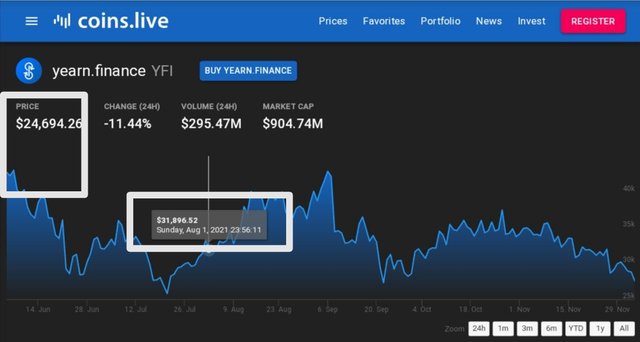
coins.live
% ROI = (Final - Initial) ÷ Initial × 100
% Decrease= ( 24694.26 - 31896.52) ÷ 31896.52 × 100
- Applying BODMAS
% Dec = -7,202.28 ÷ 31896.52 × 100
% Dec = - 0.226 (3dp) ×100
% Dec= - 22.6%
AMOUNT WE WOULD HAVE ON BOTH INVESTMENTS
Let's start by calculating for Bitcoin.
BTC= $500 + (500 x %increase)
= 500 + (500 × 22/100)
= 500 + (500 × 0.22)
= 500 + 110
= $610
YFI = 500 + (500 × %increase)
YFI = 500 + (500 × -22.6/100)
YFI = 500 + (-) 113
YFI = $387
Total ROI = ROI of Bitcoin + ROI of YFI
Total ROI = 610 + 387
Total ROI = 997
Looking at the data above, an investment of $500 as of August 1, 2021, on Yearn Finance and Bitcoin, will be on a loss of $3.

QUESTION 6
In your personal opinion, what are the risks of Yield Farming? Give reasons for your answer.
The fact that nothing is perfect, has made anything with advantages to be expected to have some series of disadvantages. This is not different in the case of Yearn farming.
LIQUIDATION
Liquidation is one of the problems that can be encountered in Yearn Farming. This happens when the amount of collateral goes below the amount of loan thereby making the collateral unable to cover the loan.
ERROR
Code error can lead to a lot of misfunctions which can cause a series of problems in the normal functioning of the platform. This issue can lead to a massive loss on investors' locked assets.
PRICE FLUACTIONS
This is another issue that can be encountered. The very fact that the cryptocurrency market is very volatile leaves the market open to any form of price change. Sometimes, when the price change occurs so suddenly, it affects the rate. When this price fluctuation leads to a rapid drop in price, a liquidity provider operating on Yearn Finance might end up getting a lower rate than initially agreed for a particular transaction.
RISK BEARING
In as much as the lack of intermediary comes with a lot of advantages, there's also a disadvantage which is as a result of a user not being able to lay complain or seek assistance in recovering a lost asset that was due to carelessness. This makes risk-bearing 100 percent on users.

CONCLUSION
Yearn farming is a process whereby investors put their assets into the liquidity pool with the primary aim of earning interest. This interest generation is aided by smart contracts without the aid of an intermediary.
Yearn Finance platform serves as a self-investment platform that operates without the interference of intermediaries. It allows users to lock their tokens which can be withdrawn at any time of choice.
These locked tokens helps to provide liquidity on the platform thereby making these farmers liquidity providers
